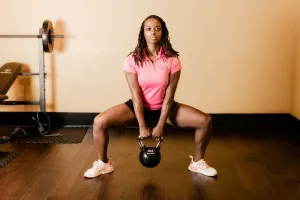Sharp pains during exercise, commonly referred to as ‘stitches,’ can be a common occurrence for many individuals engaging in physical activity. These sudden, sharp cramps often occur in the side of the abdomen or chest area, causing discomfort and potentially hindering performance. Understanding the underlying causes of stitches and how to effectively prevent and manage them during exercise can significantly enhance your workout experience.
Understanding the Causes of Stitches
Stitches can be caused by a variety of factors, including dehydration, improper breathing techniques, and muscle fatigue. Dehydration can lead to electrolyte imbalances and muscle cramping, while shallow breathing can put strain on the diaphragm, leading to cramps in the abdominal region. Additionally, inadequate warm-up or sudden changes in intensity during exercise can contribute to the onset of stitches.
Dehydration and Electrolyte Imbalance
Water is crucial for every bodily function, and its importance cannot be overstated when it comes to exercising. When you sweat, you lose not only water but also essential electrolytes like sodium and potassium. These electrolytes are vital for muscle function, and their imbalance can lead to cramping. For example, marathon runners often experience stitches due to prolonged sweat loss without adequate electrolyte replenishment. To prevent this, consider incorporating sports drinks or electrolyte tablets into your hydration strategy, especially during long-duration activities.
Breathing Techniques
Improper breathing is a common culprit behind stitches. When you breathe shallowly, the diaphragm—a muscle that plays a crucial role in breathing—doesn’t get to move fully, which can lead to cramps. Practice diaphragmatic breathing, which involves taking deep breaths that allow your belly to expand with each inhale. This technique not only reduces the risk of stitches but also enhances oxygen delivery to muscles, improving overall performance. Try this exercise: Lie on your back, place a hand on your belly, and practice inhaling deeply so your hand rises with each breath.
Muscle Fatigue and Sudden Intensity Changes
Muscle fatigue can make your muscles more prone to cramping. This is particularly true if you suddenly increase the intensity of your workout or skip a proper warm-up. Consider the case of a cyclist who, after hours of steady riding, decides to sprint up a hill—this sudden demand can trigger a stitch. To mitigate this, always begin with a gradual warm-up and incrementally increase the intensity of your workouts. Incorporating interval training can also help your body adapt to changes in intensity more effectively.
Practical Treatments for Stitches
When experiencing a stitch during exercise, it is important to slow down or stop the activity to allow the cramp to subside. Deep breathing and gentle stretching can help alleviate the discomfort.
Immediate Relief Techniques
- Deep Breathing: Focus on taking slow, deep breaths to relax the diaphragm and ease the cramp. This can be especially effective if you synchronize your breathing with your steps or pedal strokes.
- Stretching: Gently stretching the affected area can help release the tension and alleviate the pain. For a side stitch, try raising your arms above your head and leaning gently to the opposite side of the cramp.
- Massage: Applying gentle pressure to the cramped area with your fingers can help release the muscle spasm. Massage in small, circular motions while continuing to breathe deeply.
Long-term Strategies
- Hydration: Staying hydrated before, during, and after exercise is crucial in preventing stitches caused by dehydration. Aim to drink water consistently throughout the day, not just before exercise.
- Dietary Considerations: Eating a balanced diet rich in magnesium, calcium, and potassium can support muscle function and prevent cramps. Foods like bananas, leafy greens, and nuts are excellent choices.
- Core Strengthening: Incorporating core-strengthening exercises into your routine can provide better support for your abdominal muscles, reducing the likelihood of cramping during exercise. Exercises like planks, Russian twists, and leg raises can be particularly beneficial.
Prevention Strategies
Preventing stitches during exercise involves a holistic approach that includes proper hydration, breathing techniques, and physical conditioning.
Hydration and Nutrition
- Pre-exercise Hydration: Drink about 17-20 ounces of water 2-3 hours before exercising. This allows your body to reach optimal hydration levels.
- During Exercise: Sip on 7-10 ounces of water every 10-20 minutes during exercise to maintain hydration.
- Post-exercise Rehydration: After exercise, rehydrate with water and electrolytes to replenish what was lost.
Breathing and Posture
- Practice Proper Breathing: Regularly practice breathing exercises to strengthen your diaphragm and improve your ability to maintain deep breathing under exertion.
- Posture Awareness: Pay attention to your posture during exercise. Proper form can prevent muscle imbalances that contribute to the development of stitches. For runners, maintaining an upright posture with relaxed shoulders can prevent undue strain on the diaphragm.
Gradual Progression and Conditioning
- Warm-up Effectively: Start each exercise session with a dynamic warm-up to prepare your muscles for the activity ahead. This can include light jogging, arm circles, and leg swings.
- Gradual Intensity Increase: Gradually increase the intensity of your workouts to give your muscles time to adapt and reduce the likelihood of experiencing stitches. Avoid jumping into high-intensity workouts without proper conditioning.
- Regular Stretching: Engage in regular stretching exercises to improve flexibility and endurance. This can help reduce the occurrence of stitches by ensuring your muscles are prepared for the demands of exercise.
Common Mistakes and How to Avoid Them
Mistakes in exercise routines and hydration can lead to stitches, but with some foresight, they can be avoided.
Ignoring Hydration Needs
One common mistake is underestimating hydration needs. Many assume that drinking water only during exercise is sufficient. Instead, make hydration a daily habit. For example, keep a water bottle with you and take sips regularly throughout the day.
Skipping the Warm-up
Skipping a proper warm-up is another frequent error. A rushed start to your workout can shock your muscles, leading to cramps. Allocate at least 10 minutes to warm-up exercises to gradually elevate your heart rate and prepare your muscles.
Overeating Before Exercise
Eating a large meal just before exercising can increase the likelihood of stitches. Aim to eat a light meal or snack with carbohydrates and protein about 1.5 to 3 hours before exercising. Avoid high-fat and high-fiber foods that take longer to digest.
Real-life Examples and Case Studies
To put theory into practice, let’s explore real-life scenarios where stitches can occur and how they were effectively managed.
Case Study: The Weekend Warrior
John, a weekend runner, often experienced stitches during his Saturday morning jogs. After consulting with a trainer, he realized his pattern of heavy Friday night meals and insufficient hydration was to blame. By adjusting his Friday meal to a lighter, easily digestible option and starting his hydration early on Saturday morning, he reduced the occurrence of stitches significantly.
Case Study: The Novice Swimmer
Lisa, a beginner swimmer, found herself frequently battling stitches during her swim sessions. By incorporating breathing exercises into her routine and focusing on rhythmic breathing while swimming, she was able to minimize cramps and enhance her performance.
Final Thoughts
Understanding and managing stitches involves a combination of proper hydration, breathing techniques, and gradual conditioning. By incorporating these strategies into your routine, you can enhance your exercise experience and performance, turning what once was a painful interruption into a rare occurrence. Remember, listening to your body and adjusting your habits accordingly is the key to a successful and fulfilling workout journey.



